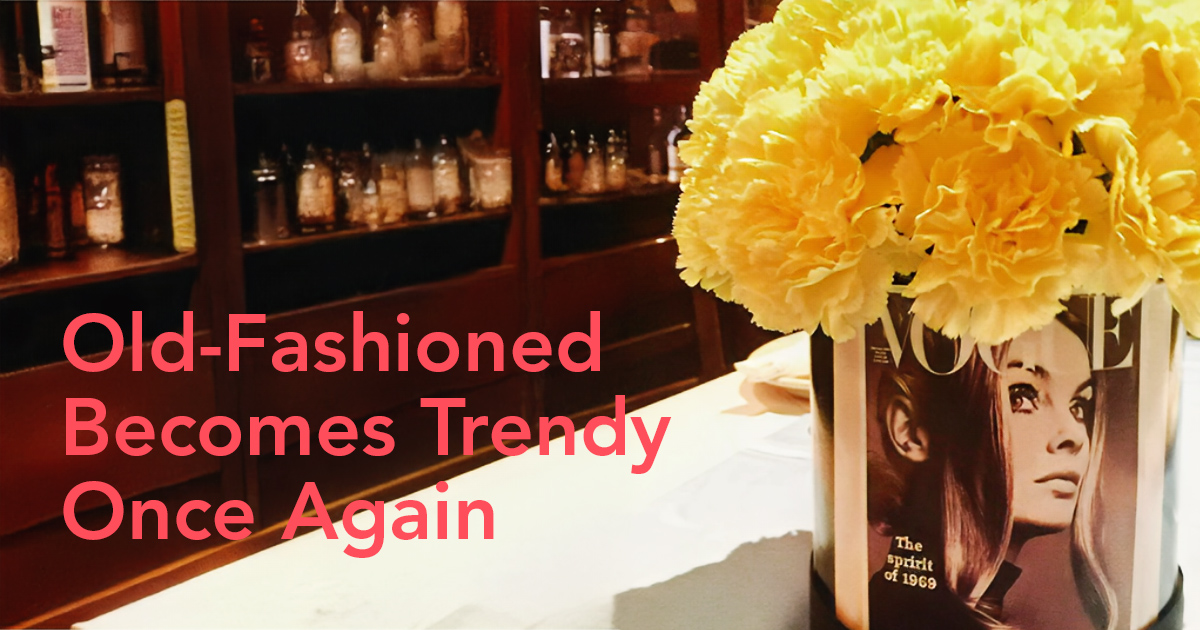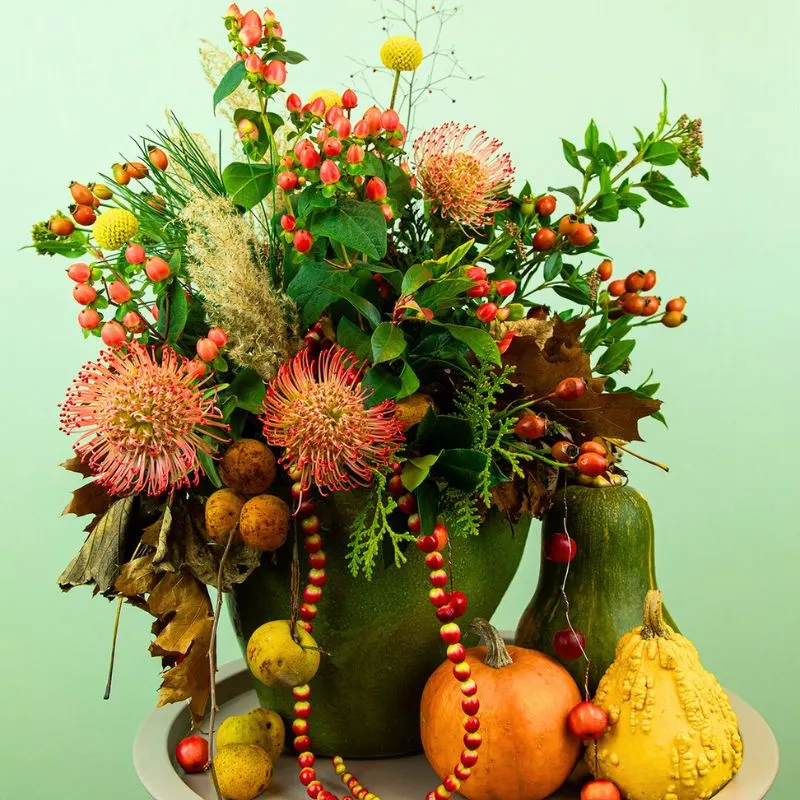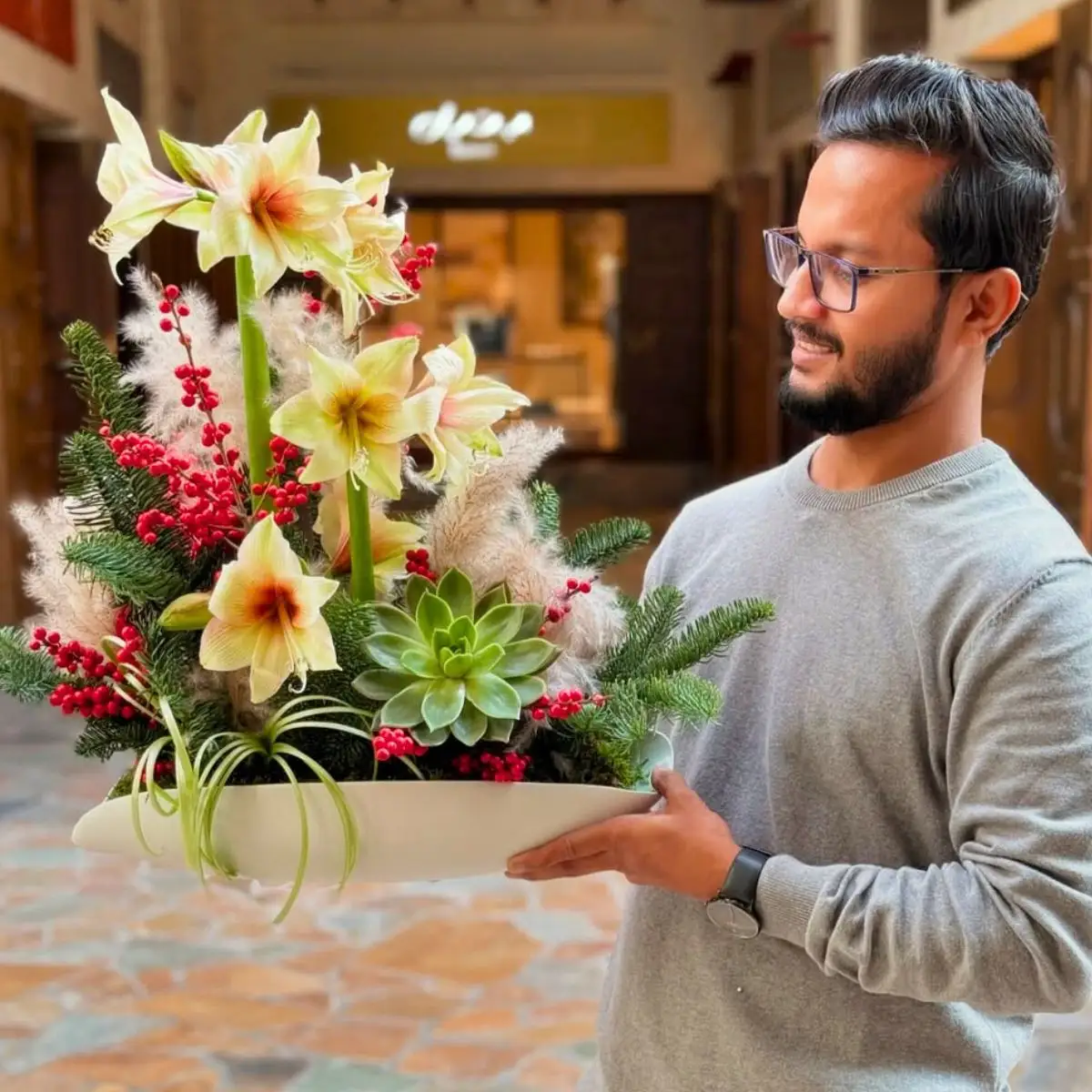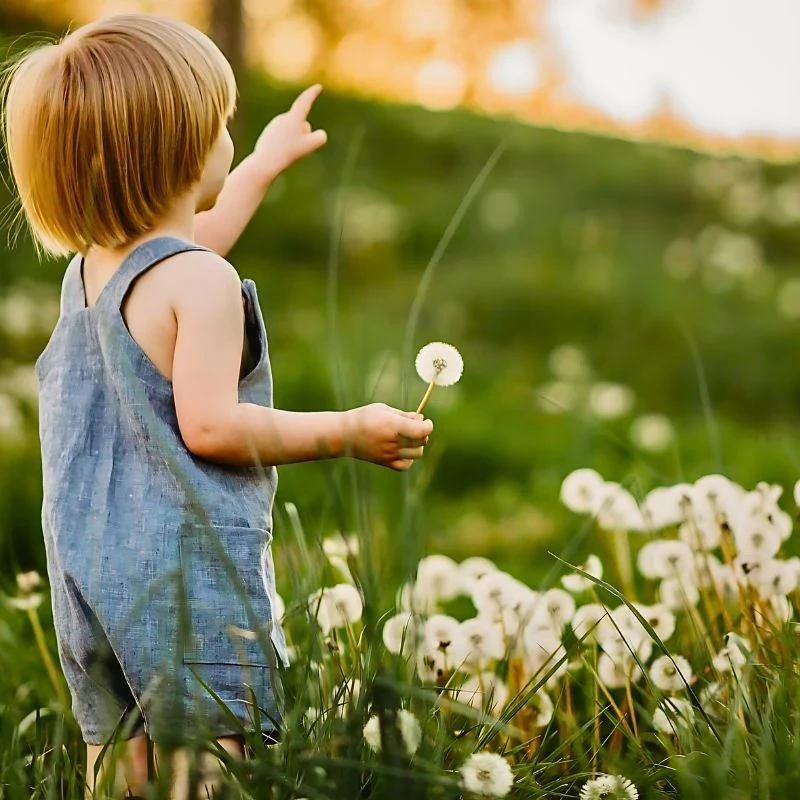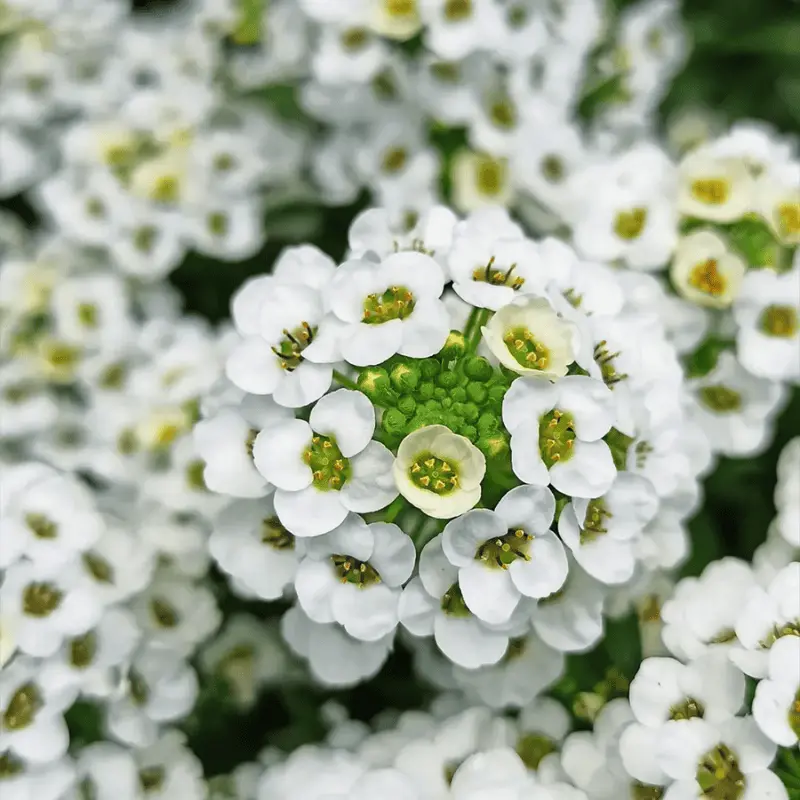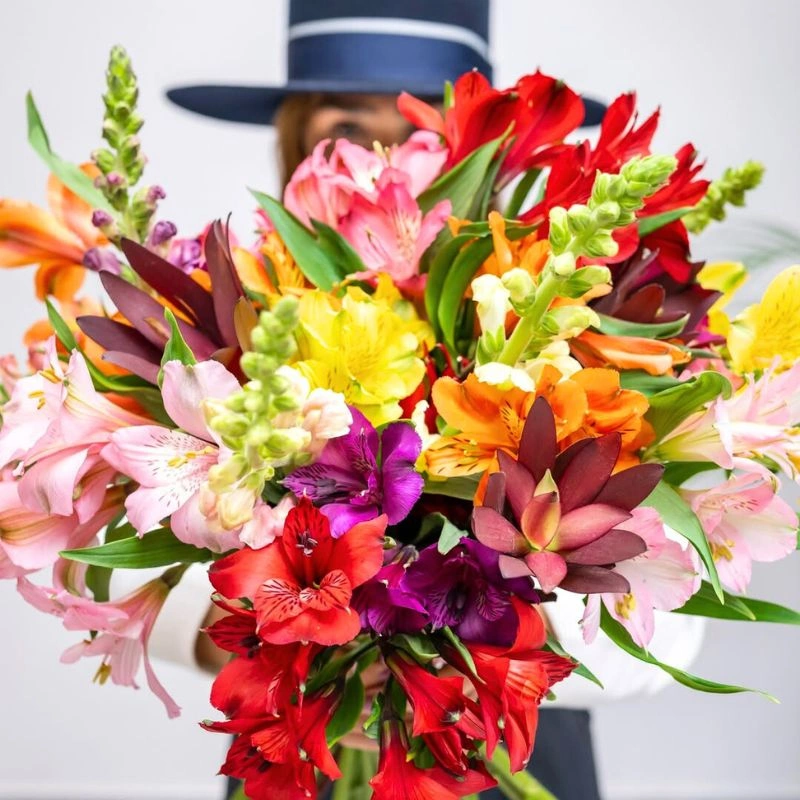Carnations, botanically known as Dianthus, have been part of the floral world for centuries, and they’re having a real moment again. Its popularity may have skipped a generation, but they’ve found their way back into weddings, home arrangements, and modern bouquets, with that touch of nostalgia people seem to crave these days.
At Aposentos, a Colombian grower that’s been cultivating carnations for over thirty years, this flower is more than a classic – it’s the farm’s identity. Marketing Manager Nicolás Gil Ramírez explains that carnations and mini carnations are all they grow, and that single focus has helped them perfect every step of the process. Just like their experience will help you take the best care of your carnations in your shop or at home. Read this closely, and you'll get the best out of these already long-lasting flowers.
The Carnation Comeback
Nicolás Gil Ramírez:
“We work hand in hand with breeders to test new varieties and bring constant innovation to the market,” Nicolás says. “Every year, we try something new – new colors, improved genetics, and better durability – but we always keep our core shades like red, pink, white, and yellow. These are the foundation.”
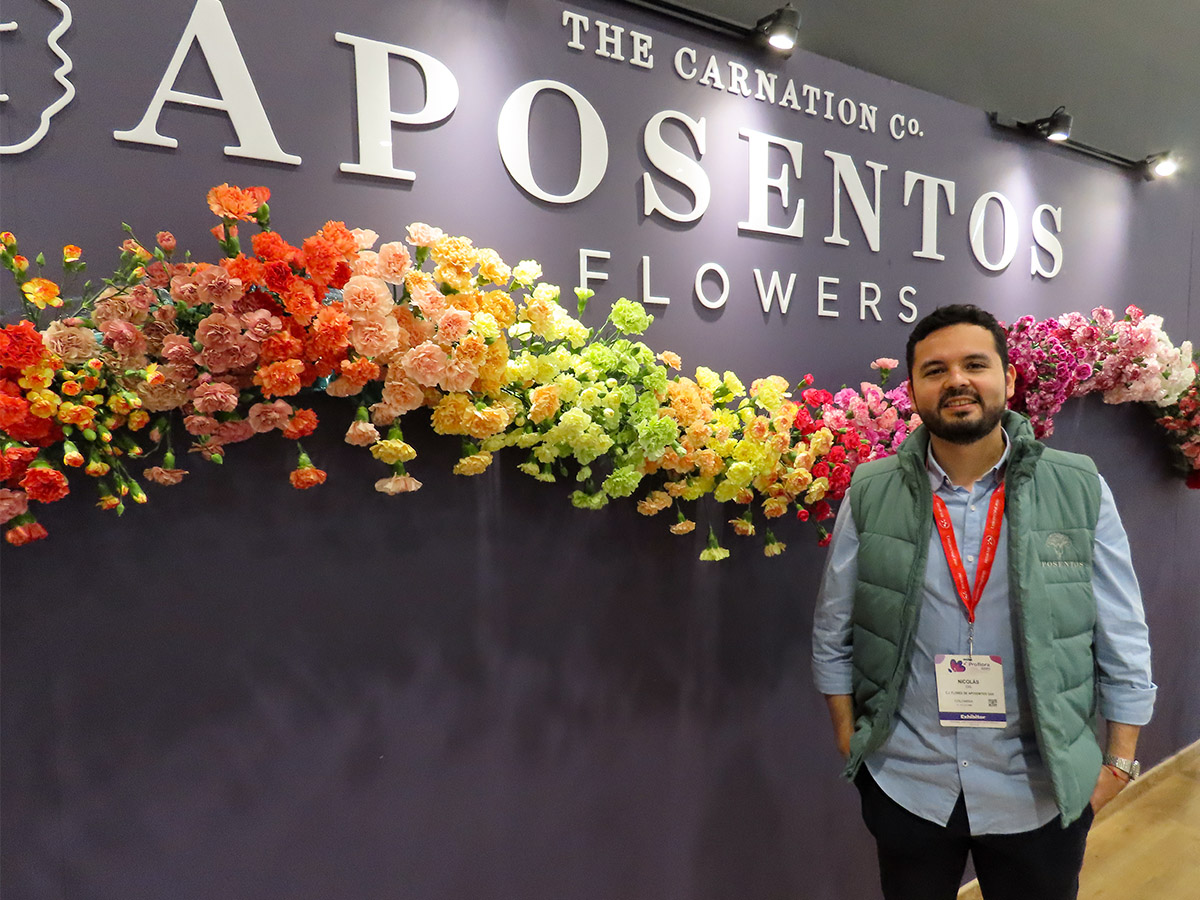
So, why the renewed popularity? According to Nicolás, the answer lies in emotion.
“People want to reconnect with the past,” he explains. “The carnation brings back that nostalgic feeling – the comfort and warmth of something familiar. During and after the pandemic, people started valuing home life and small, meaningful details again. Having carnations around fits perfectly with that mood.”
He notes that vintage tones are leading this revival. Soft creams, antique pinks, and warm beige hues are becoming staples in modern floral design. They mix beautifully with trendy dried materials or modern glass vases, making carnations versatile and fresh again.
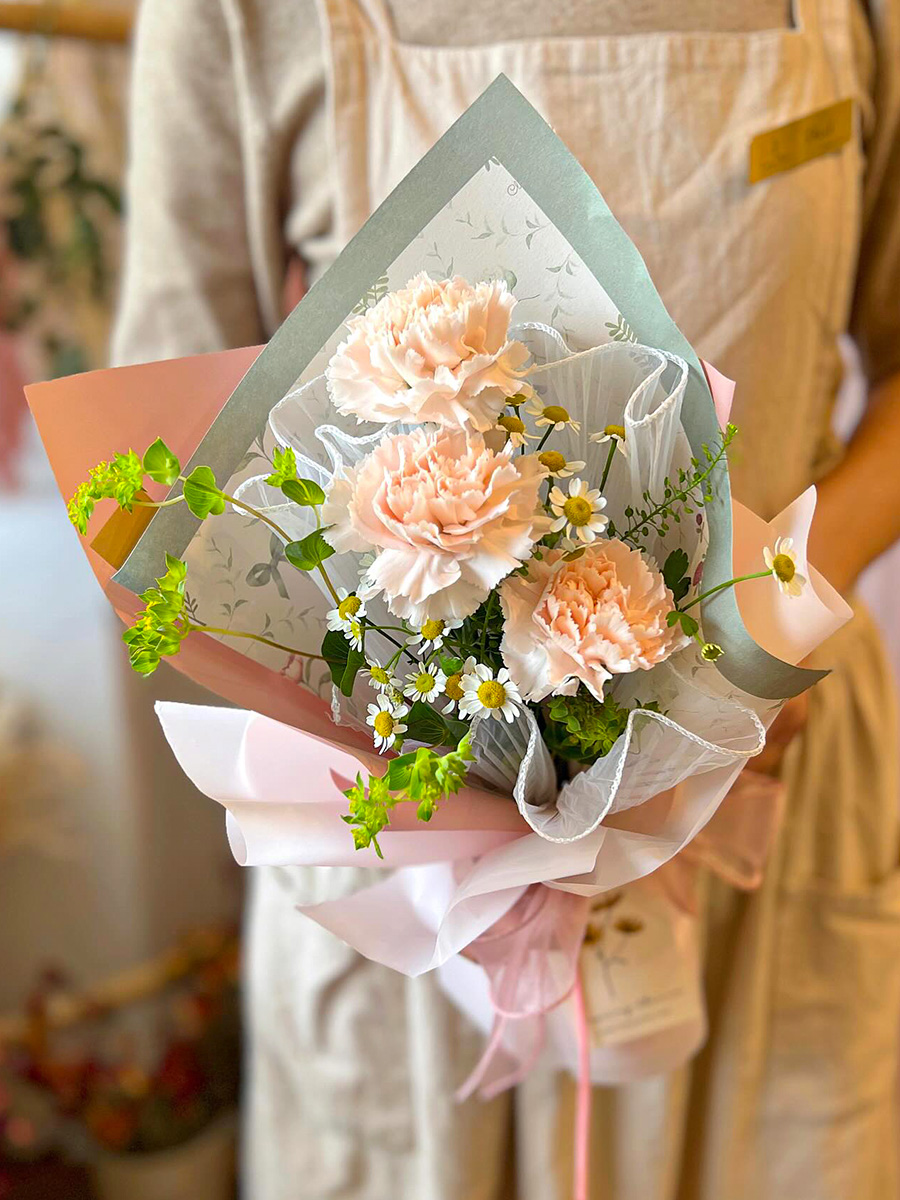
The Aposentos Way: From Harvest to Vase
Aposentos is meticulous about post-harvest care, which is crucial for keeping carnations looking their best. The process starts right after cutting – within just ten minutes. “The flowers go straight to hydration,” Nicolás explains. “We use Chrysal RVB Clear or AVB to give them that first drink, ensuring they stay firm and keep their color.”
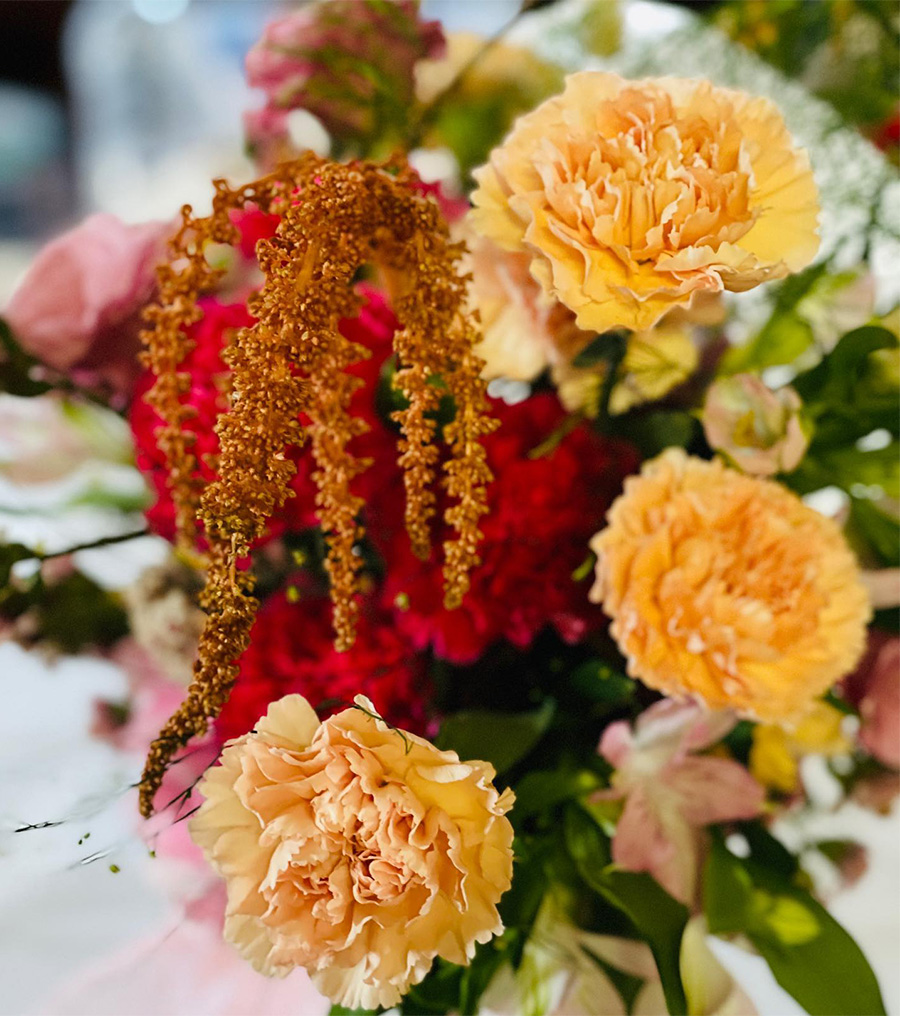
After hydration, the flowers undergo a full quality check. Every stem is inspected for length, petal quality, and color consistency. The lower leaves are stripped to keep the stems clean, and bunches are prepared according to each client’s specifications – typically 20 or 25 stems per bunch for standard carnations and 10 to 20 for minis.
Before packaging, Aposentos gives the flowers a second hydration phase, again with Chrysal solutions. Then comes pre-cooling: a gentle process that gradually brings the temperature down from around 6°C to about 2°C. “This step prevents fast cooling, which can damage the flower,” Nicolás says. “It’s key for keeping the stems strong and fresh during long shipments.”
And long indeed – carnations from Aposentos can travel up to 30 days in a container to reach markets as far as Japan or the Netherlands. Once they arrive, they’re still in excellent condition, ready for wholesalers and florists to create with confidence.

For Floral Designers: Getting the Most Out of Carnations
As a florist or even designer, you can do so much with a Dianthus! They're fit for weddings, funerals, Mother's Day, Father's Day, and even as a birth flower for babies born in January! Florists already appreciate carnations for their durability and flexibility. Still, Nicolás offers a few practical tips to help them shine even longer:
- Re-cut the stems about 2–3 cm before placing them in clean, fresh water. This opens the water channels and improves hydration.
- The best treatment for carnations in store involves using a solution of Professional 2. This keeps the carnation in top condition, retains its color, and prevents the flower from opening up too much. Your carnation will last a lot longer, and you will experience way less waste.
- For floral arrangements and vases, you can use Professional 3. It contains the much-needed nutrients that your flowers need to bloom and keep them fresh for up to 60% longer.
- Keep the water clean. Change it regularly and remove any leaves below the waterline.
- Store cool. Ideally between 2–5°C, away from sunlight, drafts, or fruit.
- Also, it is very important to provide enough flower food to your customers so they will be able to enjoy your work as long as possible.
Add a little ice. “It helps keep the stems turgid and straight for longer,” Nicolás adds.
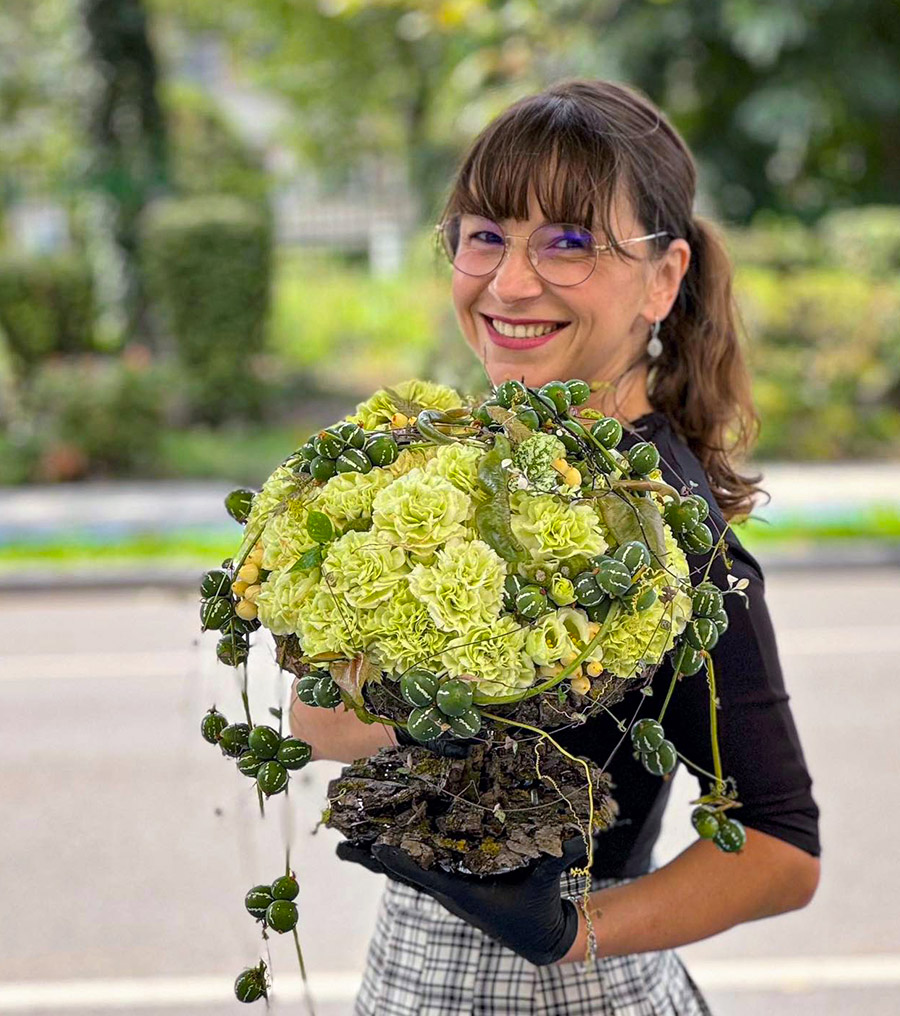
He also mentions that carnations drink heavily at first:
“After their long trip, they’re like humans after a flight – thirsty. Use a taller vase at the beginning, then they’ll adjust and last easily more than 15 days.”
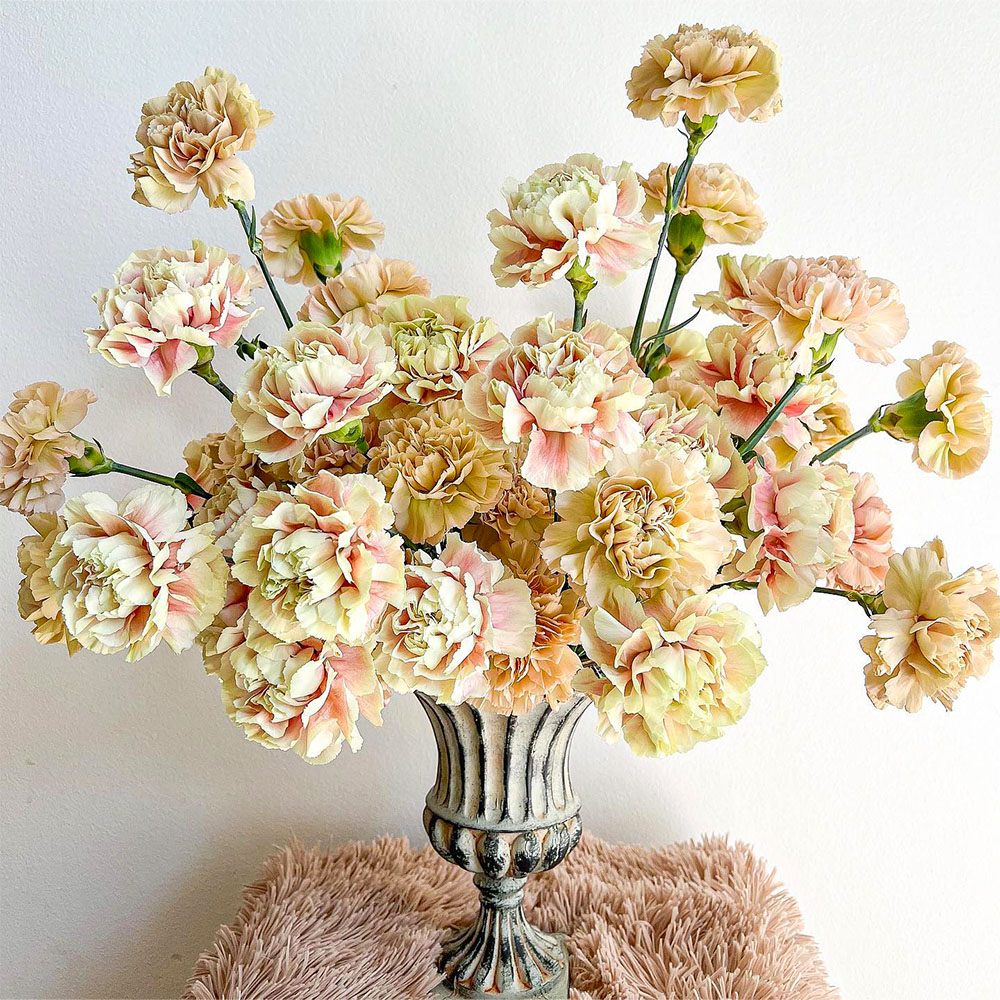
For Consumers: Simple Steps for Long Vase Life
Once carnations reach your home, they don’t ask for much. Just a few easy steps make all the difference:
- Trim the stems about 2–3 cm before placing them in a clean vase with fresh water. This opens the water channels and improves hydration.
- Use Chrysal Paper sachet flower food for proper hydration and nutrition. If your florist hasn't given you one, just ask for it!
- Keep them in a cool spot – no direct sun, heat, draft, or fruit bowls nearby (ethylene is a carnation’s enemy).
- Refresh the water every few days.
Do that, and you can enjoy your bouquet for two weeks or more. Don't worry: carnation is the flower that never bores. Not then, not now. What for a while may have been old-fashioned has become trendy again.
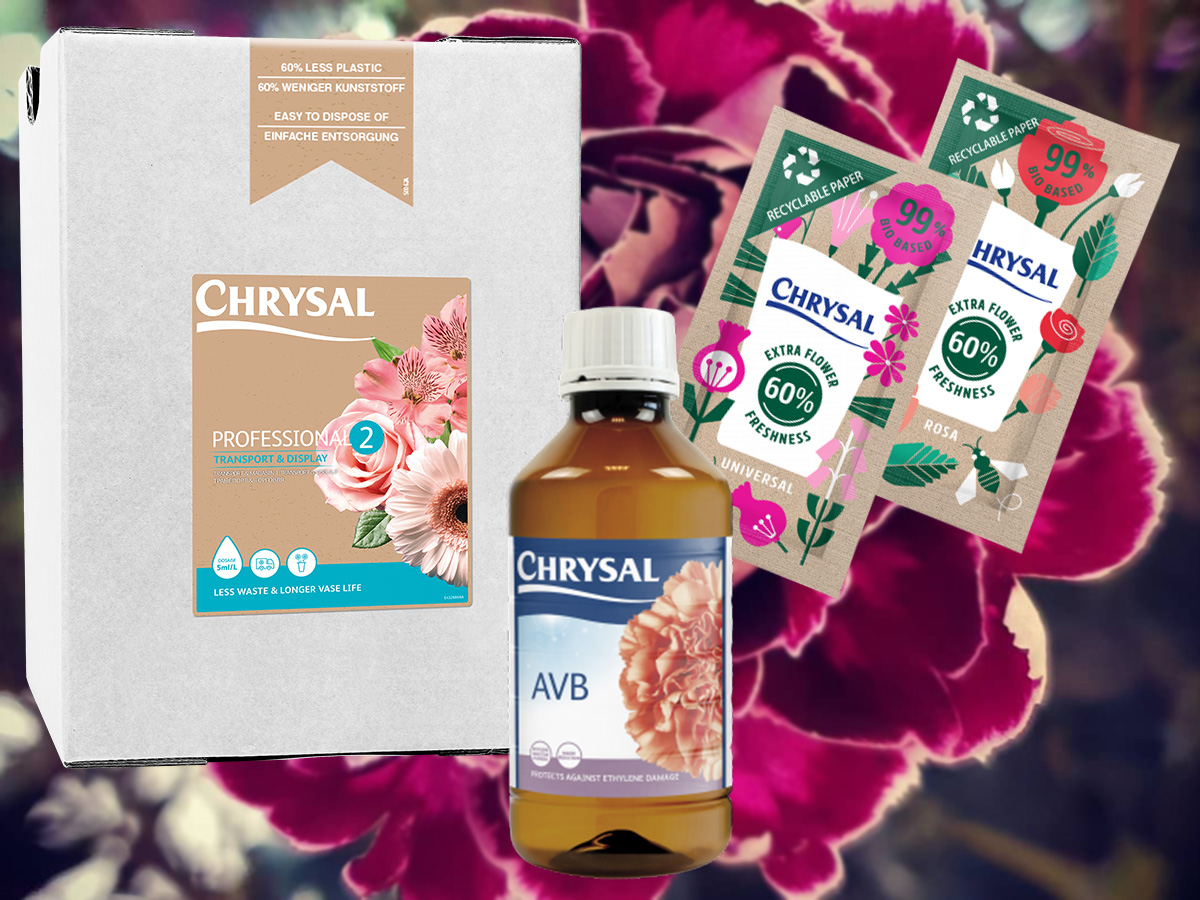
Why Carnations Belong in Every Design
Nicolás believes carnations deserve their spot in every florist’s palette:
“They’re incredibly versatile,” he says. “You can use the full stems, just the heads, or even remove a few outer petals for a softer look. Florists love them because they hold up under almost any treatment.”
With new varieties constantly arriving and reliable post-harvest care from companies like Chrysal, carnations are staying fresher, longer, and fitting perfectly into today’s floral trends.
Header and feature image by @greenworksdc.

